Hello science addicts today for the first time we are going to observe the genus Spirogyra under my microscope, these algae are mucilaginous masses that normally float freely in bodies of water in this case I took a sample from a small lagoon, the cells have a cylindrical morphology and they are not normally green branched, come with me to see them up close and learn their structure!🌍🤯🧠
Hola adictos a la ciencia hoy por primera vez vamos a observar el genero Spirogyra bajo mi microscopio, estas algas son masas mucilaginosas que normalmente flotan libremente en los cuerpos de agua en este caso tome una muestra de una pequeña laguna, las celulas tienen una morfologia cilindrica y no son ramificadas normalmente verdes, acompañame para verlas muy de cerca y aprender su estructura!🕵️♂️👨🏫

Their habitat🙇♂️🤔/Su hábitat👨🏫
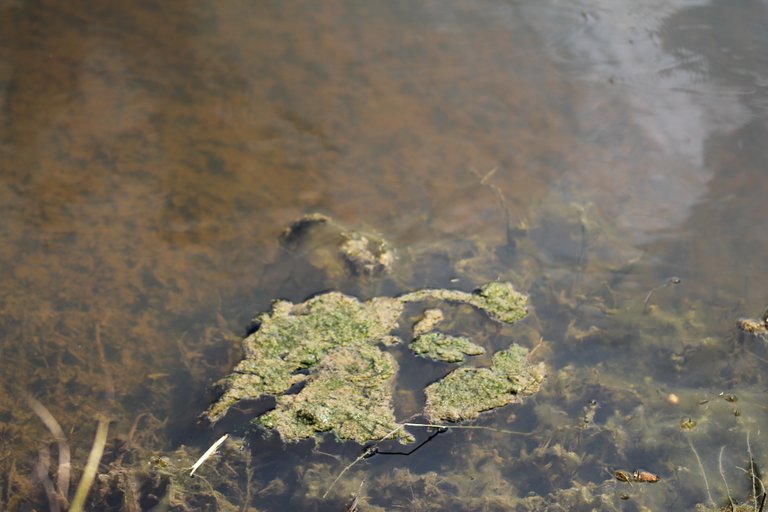
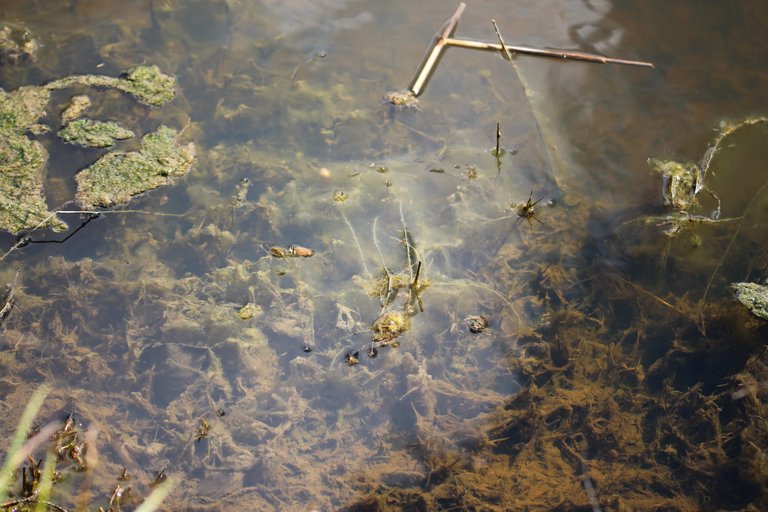
Normally we can see them in stagnant freshwater, I took some samples from this pond that was formed by rain, they have bistratified membranes, the name is due to the fact that the chloroplasts are accentuated in the form of left-handed or spiral, another of its characteristics is that They present several pyrenoids, (colorless protein mass).🚩🌏🌅
Normalmente las podemos observar en aguas dulces estancadas, yo tome unas muestras de este estanque que se formo por la lluvia, presentan membranas biestratificadas, el nombre se debe a que los cloroplastos estan acentados en forma de levogiros o espiral, otra de sus caracteristicas es que presentan varios pirenoides, (masa proteica incolora).🌱🍀

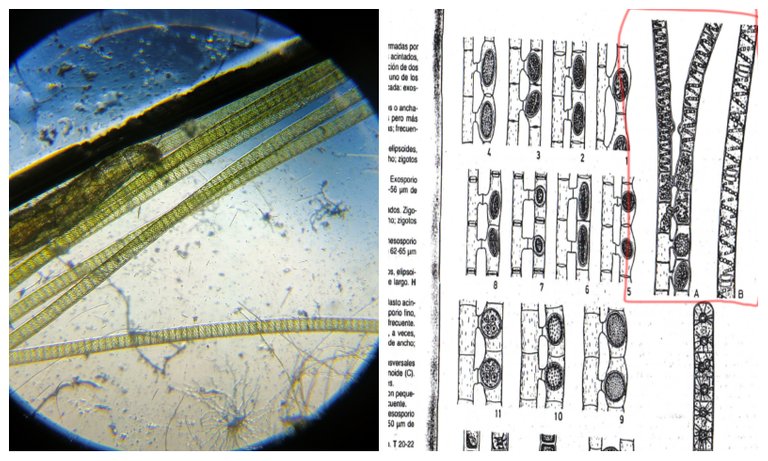
Reproduction is interesting because it is sexual and occurs with the "copulation of two filaments", later the result is a "ladder" shaped structure, what happens is that chloroplasts fuse with filaments and there the zygotes are produced, when the zygotes are mature a tristratified membrane is produced do you know what that means? that is, they have a "mesosporium, endosporium and exosporium".🕵️♂️👨🏫
La reproduccion es interesante porque es sexual y ocurre con la "copulacion de dos filamentos", posteriormente el resultado es una estructura con forma de "escalera", lo que ocurre es que se fusionan cloroplastos con filamentos y alli se producen los zigotos, cuando los zigotos estan maduros se produce una membrana triestratificada sabes que significa eso? osea que tienen un "mesosporio, endosporio y exosporio".🧠🕵️♂️

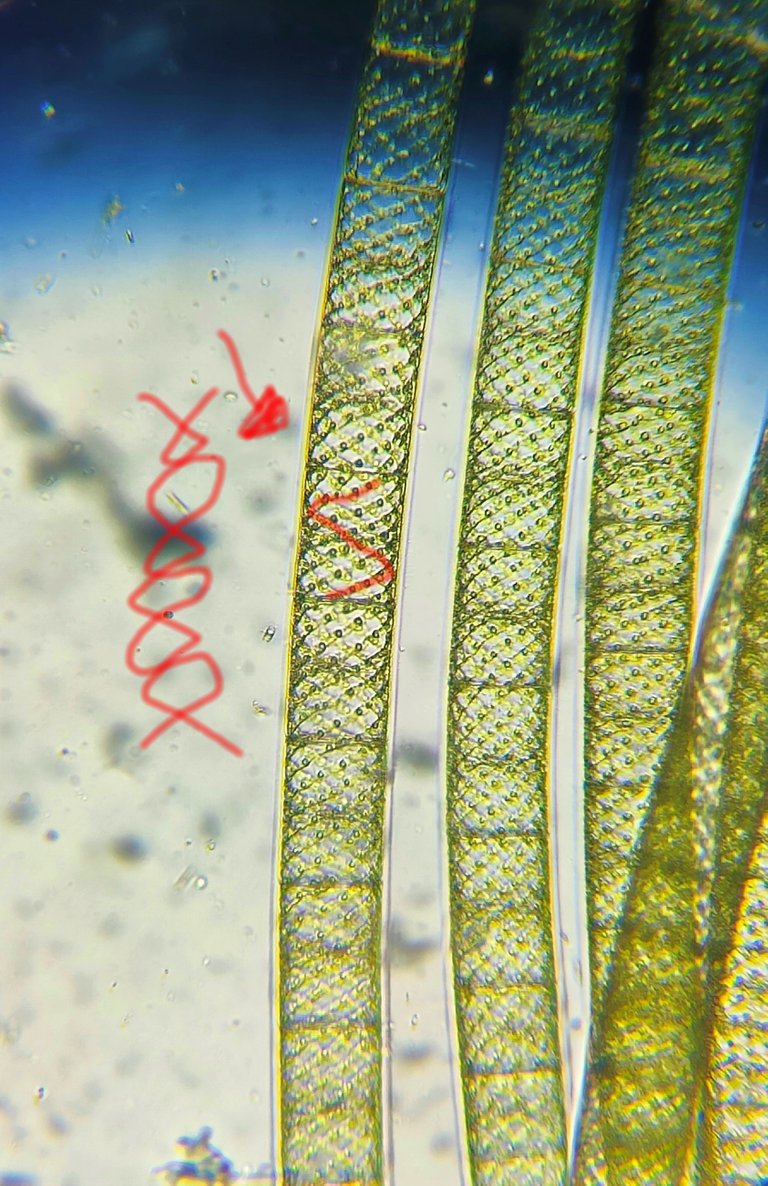
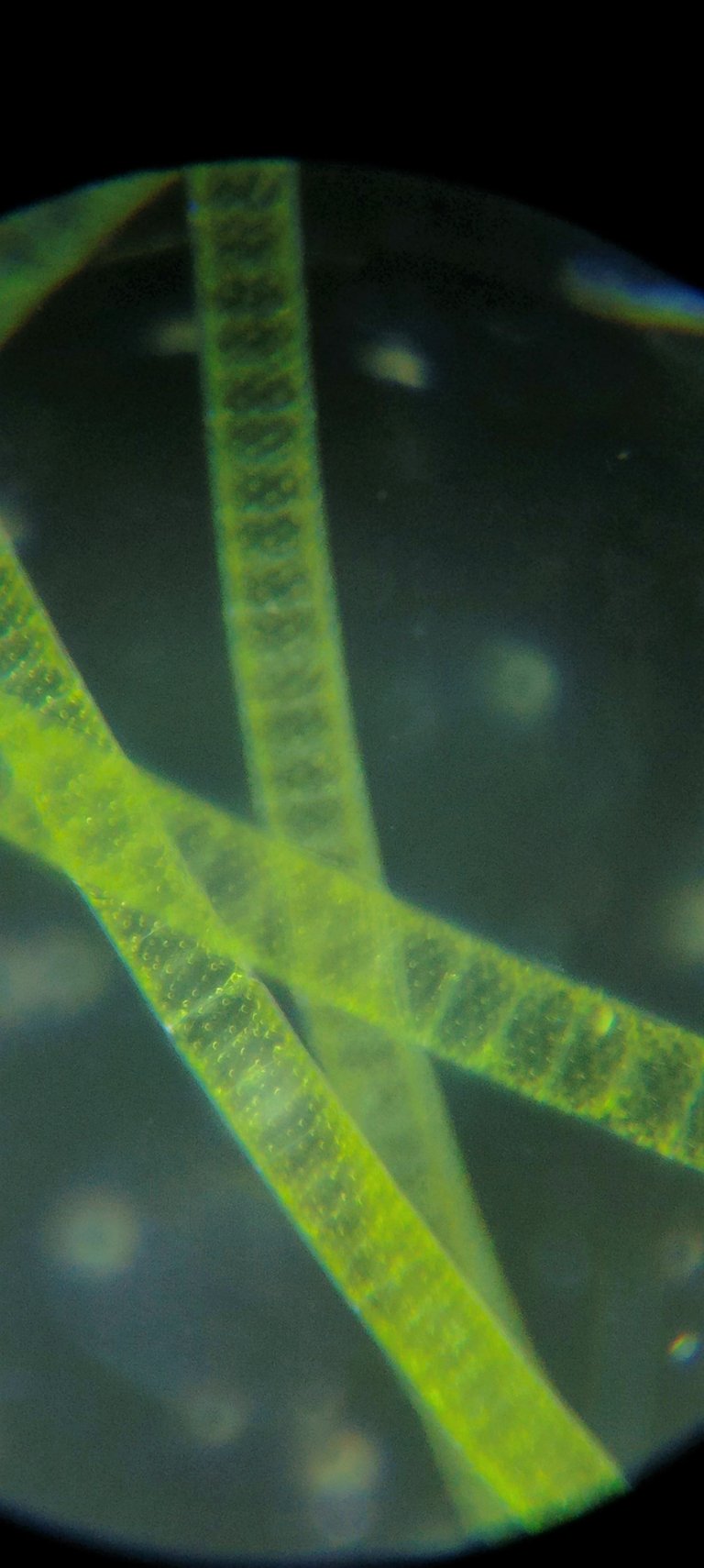
Spirogyras have a material that when not fruitful is "impossible to identify" making it a very interesting algae, more than 400 species have been identified worldwide, the size varies between "a few microns up to a few centimeters".🤔🤔
Las spirogyras tienen un material que cuando no esta fructificado es "imposible de identificar" convirtiendola en un alga muy interesante, en todo el mundo se han identificado mas de 400 especies, el tamano varia entre "unas pocas micras hasta medir algunos centimetros".🌍🍀

Structure🙇♂️🤔/Estructura👨🏫
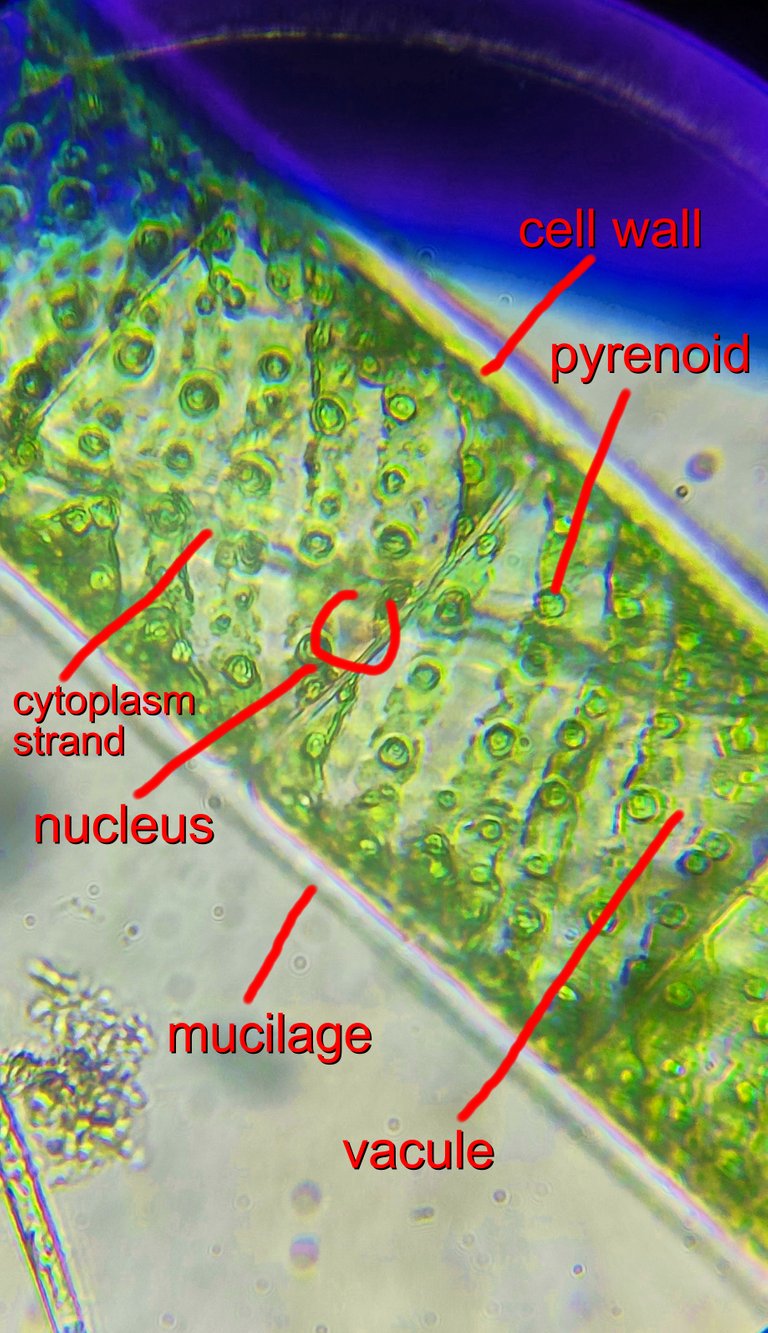
Here you have a photograph that I took with more than 100x magnification, the parts that stand out are the pyrenoid that is present in the stroma of the plastids, we also see the mucilage that is a layer secreted by the algae, here it is believed that it helps with buoyancy of algae, and makes them slimy!🌱☘
Aqui tienes una fotografia que tome con mas de 100x de aumento, las partes que destacan es el pirenoide que esta presente en el estroma de los plastos, tambien vemos el mucílago que es una capa segregada por las algas aqui se cree que ayuda a la flotabilidad de las algas, y las hace viscosas! 🤯👨🏫🕵️♂️

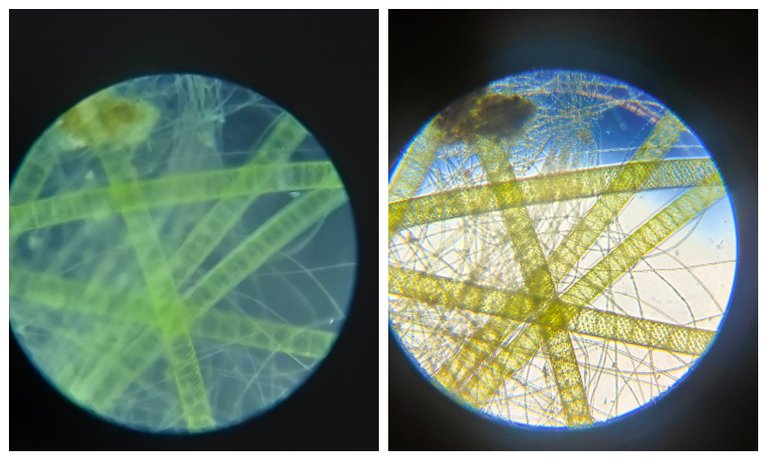
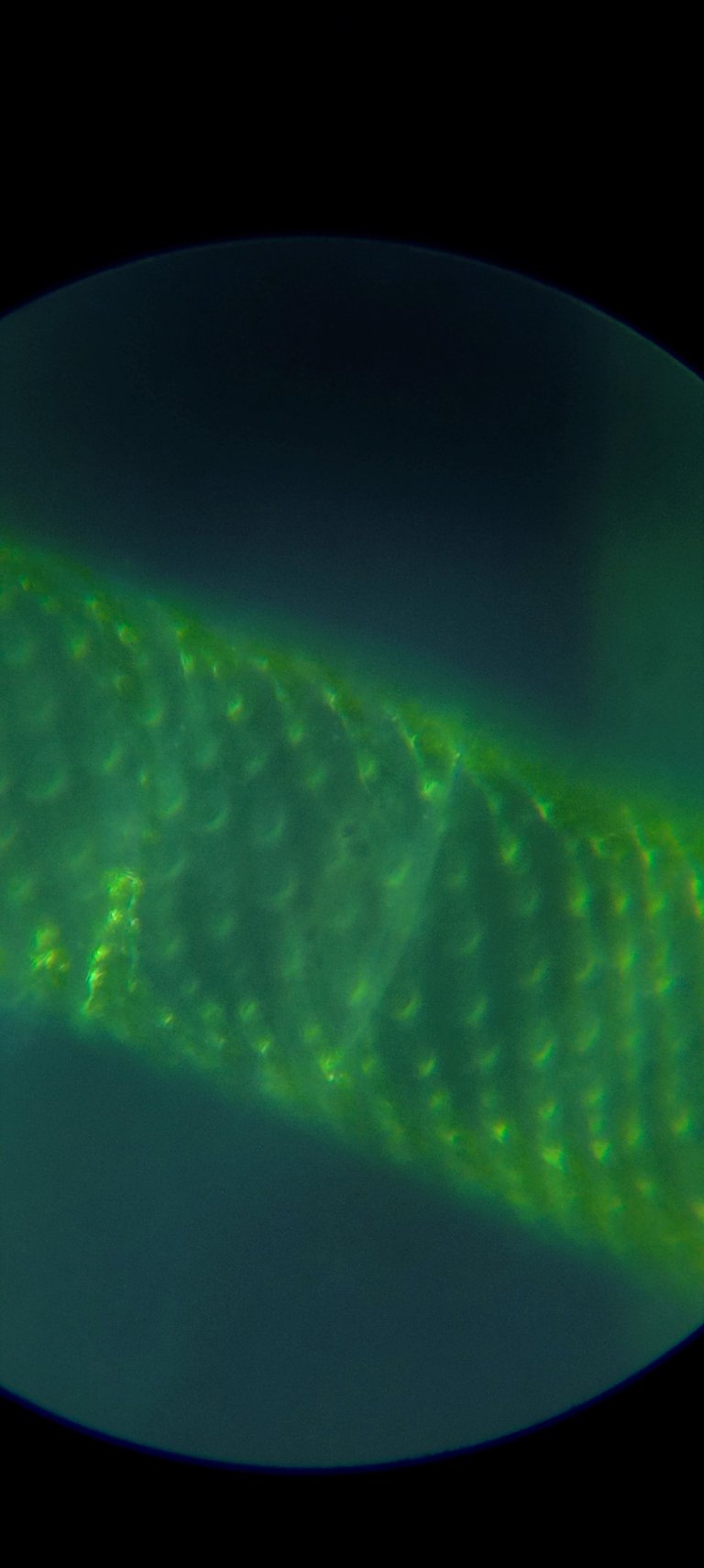

There are records of some species of Spirogyra inhabiting fast water, these algae are the most common! To identify them, you can count the number of chloroplasts in each cell. There are those who say that these are the most interesting algae to study because of their helical shape and they are normally chosen by many other microorganisms to feed, hide or use them for reproduction!👨🏫🕵️♂️
Hay registros de algunas especies de Spirogyra habitando aguas rapidas, estas algas son las mas comunes! para identificarlas se pueden contar el numero de cloroplastos de cada celula hay quienes dicen que estas son las algas mas interesantes de estudiar por su forma en helice y normalmente son escogidas por muchos otros microorganismos para alimentarse, esconderse o usarlas para reproduccion!🧠🌅

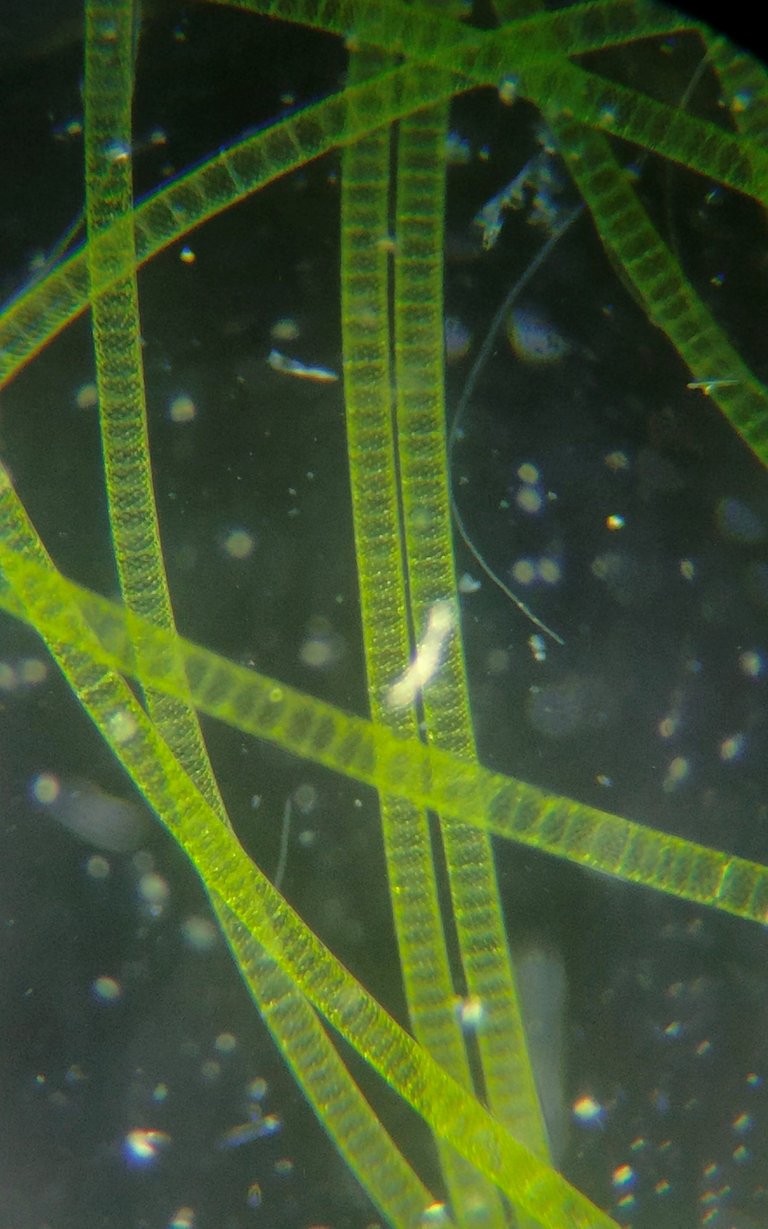

DNA is an organization to foster and DENSIFY NATURE-APPRECIATION which aims to establish REPORTS OF BIODIVERSITY DATA that is contributed by all of us Hiveans and subsequently cataloged.
Therefore DNA searches for HIGH-QUALITY posts that aim to DESCRIBE and determine the BIODIVERSITY AROUND YOU with added EXPLANATIONS and INFORMATION. For these informative posts they offer a CURATION SERVICE using the @dna.org account. It is also a CURATION TRAIL. Just add the #dna TAG if you think that any of your posts is what they are looking for.
GRACIAS POR LEERME / THANKS FOR READING ME /FOTOS DE MI PROPIEDAD / PHOTOS OF MY PROPERTY)🙂🧠🦾👍
Sources/ Fuentes bibliograficas:

















These microbes are amazing creatures and their sense of adaptability to variety of environment is something that we can learn from as humans. Did you take all these images yourself? They are beautiful and very well done, thanks for sharing this with us
Hello friend, if the images are my property, I have never photographed them!
¡Felicitaciones!
1. Invierte en el PROYECTO ENTROPÍA y recibe ganancias semanalmente. Entra aquí para más información.
3. Suscríbete a nuestra COMUNIDAD, apoya al trail de @Entropia y así podrás ganar recompensas de curación de forma automática. Entra aquí para más información sobre nuestro trail.
4. Creación de cuentas nuevas de Hive aquí.
5. Visita nuestro canal de Youtube.
Atentamente
El equipo de curación del PROYECTO ENTROPÍA
Thanks for your contribution to the STEMsocial community. Feel free to join us on discord to get to know the rest of us!
Please consider delegating to the @stemsocial account (85% of the curation rewards are returned).
You may also include @stemsocial as a beneficiary of the rewards of this post to get a stronger support.